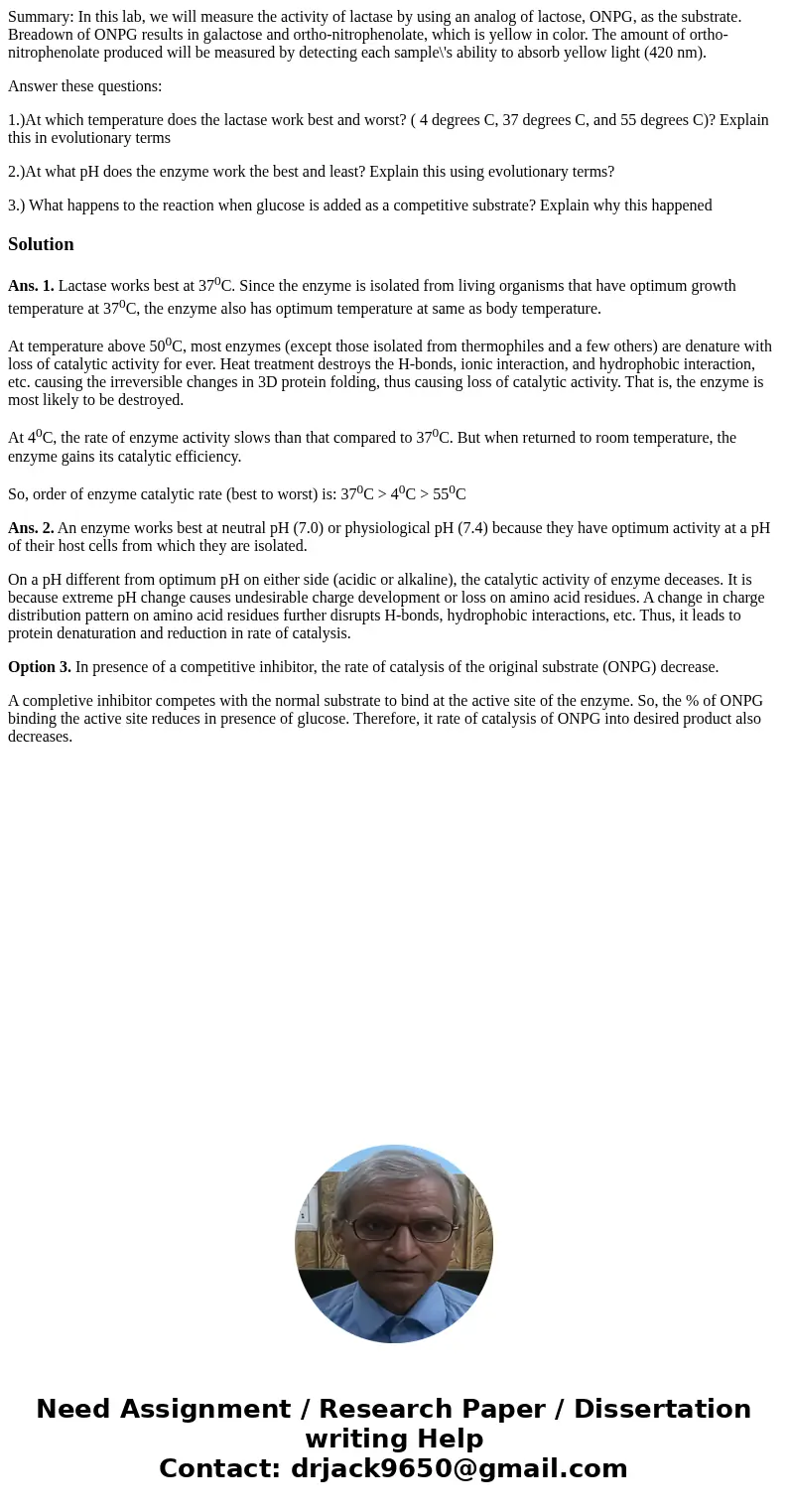Summary In this lab we will measure the activity of lactase
Summary: In this lab, we will measure the activity of lactase by using an analog of lactose, ONPG, as the substrate. Breadown of ONPG results in galactose and ortho-nitrophenolate, which is yellow in color. The amount of ortho-nitrophenolate produced will be measured by detecting each sample\'s ability to absorb yellow light (420 nm).
Answer these questions:
1.)At which temperature does the lactase work best and worst? ( 4 degrees C, 37 degrees C, and 55 degrees C)? Explain this in evolutionary terms
2.)At what pH does the enzyme work the best and least? Explain this using evolutionary terms?
3.) What happens to the reaction when glucose is added as a competitive substrate? Explain why this happened
Solution
Ans. 1. Lactase works best at 370C. Since the enzyme is isolated from living organisms that have optimum growth temperature at 370C, the enzyme also has optimum temperature at same as body temperature.
At temperature above 500C, most enzymes (except those isolated from thermophiles and a few others) are denature with loss of catalytic activity for ever. Heat treatment destroys the H-bonds, ionic interaction, and hydrophobic interaction, etc. causing the irreversible changes in 3D protein folding, thus causing loss of catalytic activity. That is, the enzyme is most likely to be destroyed.
At 40C, the rate of enzyme activity slows than that compared to 370C. But when returned to room temperature, the enzyme gains its catalytic efficiency.
So, order of enzyme catalytic rate (best to worst) is: 370C > 40C > 550C
Ans. 2. An enzyme works best at neutral pH (7.0) or physiological pH (7.4) because they have optimum activity at a pH of their host cells from which they are isolated.
On a pH different from optimum pH on either side (acidic or alkaline), the catalytic activity of enzyme deceases. It is because extreme pH change causes undesirable charge development or loss on amino acid residues. A change in charge distribution pattern on amino acid residues further disrupts H-bonds, hydrophobic interactions, etc. Thus, it leads to protein denaturation and reduction in rate of catalysis.
Option 3. In presence of a competitive inhibitor, the rate of catalysis of the original substrate (ONPG) decrease.
A completive inhibitor competes with the normal substrate to bind at the active site of the enzyme. So, the % of ONPG binding the active site reduces in presence of glucose. Therefore, it rate of catalysis of ONPG into desired product also decreases.

 Homework Sourse
Homework Sourse